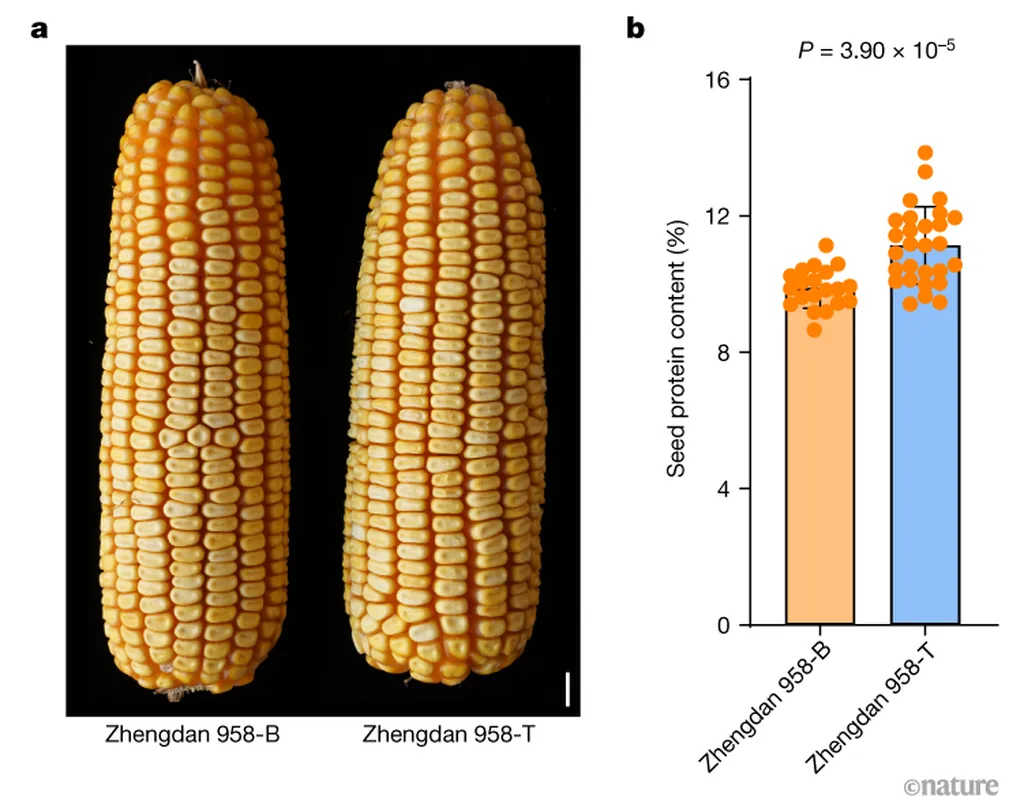In the heart of agricultural innovation, a groundbreaking study has emerged that could redefine maize cultivation and its nutritional profile. Khadim Dawar, a researcher from the Department of Soil and Environmental Science at the University of Agriculture, has led a study that explores the synergistic effects of micronutrients on maize productivity and biofortification. Published in the esteemed journal *Scientific Reports* (translated to English as “Scientific Reports”), this research delves into the combined application of zinc, iron, and boron to enhance maize yield and nutritional quality.
Maize, a staple crop worldwide, faces significant challenges due to climate change-induced stresses. These stresses threaten both productivity and nutritional quality, making it crucial to find sustainable solutions. Dawar’s study focuses on the often-overlooked synergistic roles of micronutrients, particularly zinc (Zn), iron (Fe), and boron (B). “Previous studies have largely focused on individual micronutrient management, overlooking their combined effects,” Dawar explains. “Our research uniquely addresses this gap by evaluating sole and consortia applications of these micronutrients to enhance yield and micronutrient content in maize.”
The study employed eight different treatments, including control, individual applications of Fe, Zn, and B, and various combinations of these micronutrients. The results were striking. The combination of Fe, Zn, and B (Fe + Zn + B) led to a significant increase in maize plant height (33.12%), 1000-grain weight (37.05%), biological yield (21.23%), and grain yield (47.35%). Additionally, there was a notable decrease in antioxidant enzymes such as POD, SOD, CAT, and APx compared to the control, indicating reduced oxidative stress in the plants.
One of the most compelling findings was the improvement in the concentration of Fe, Zn, and B in both leaves and grains. “The efficacious functioning of Fe + Zn + B was verified through the increased micronutrient concentrations in the plant tissues,” Dawar notes. This suggests that the combined application of these micronutrients not only boosts yield but also enhances the nutritional quality of maize, a critical factor for food security and public health.
The commercial implications of this research are substantial. For the agricultural sector, the adoption of Fe + Zn + B amendments could lead to higher yields and more nutritious crops, benefiting farmers and consumers alike. “This study provides a promising avenue for mitigating nutritional deficiencies in maize, which could have far-reaching impacts on global food security,” Dawar adds.
Moreover, the energy sector could also benefit from this research. Maize is a vital component in the production of biofuels, and improving its yield and nutritional profile could enhance the efficiency and sustainability of biofuel production. As the world shifts towards renewable energy sources, innovations in agricultural practices that boost crop productivity and quality are crucial.
Looking ahead, this research opens new avenues for exploring the synergistic effects of micronutrients in other crops. “Our findings highlight the importance of considering the combined effects of micronutrients in agricultural practices,” Dawar concludes. “This approach could be extended to other crops, potentially revolutionizing modern agriculture and food security.”
As the agricultural community grapples with the challenges posed by climate change, this study offers a beacon of hope. By harnessing the power of micronutrient synergy, farmers and researchers can work together to create a more resilient and nutritious food supply. The journey towards sustainable agriculture is complex, but with innovations like these, the future looks promising.

